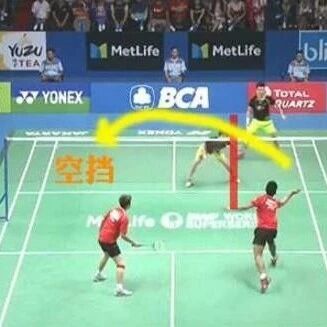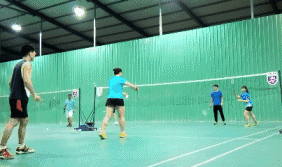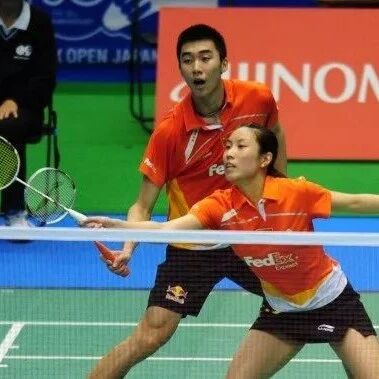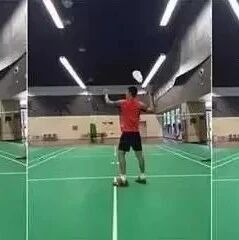There are 4 ways to hit the open space in badminton, but 90% of players only know the first one.


Anyone who plays knows you should always aim to exploit your opponent’s "open spaces." Yet, many people mistakenly limit their understanding of "open spaces" to literal gaps in physical space—areas where no one is standing. In reality, though, any weakness in the defense—whether visible or hidden—can be considered an "open space." In other words, there are both obvious and subtle openings that can be targeted effectively.
Today, the editor will share with you how to exploit your opponent's openings—and also reveal strategies for defending against being caught off guard.
The most obvious type of space is the area farthest from your opponent—essentially, the "empty zone." This is the kind of open space most people immediately think of. When you disrupt your opponent’s formation during a match, hitting the ball into this vacant area forces them to either fail to get into position—or makes it significantly harder for them to do so—allowing you to either secure an immediate point or gain a crucial advantage.

Response method:
After every rally, make sure you have the awareness to move back into position. If you don’t already have this mindset, you can practice it at home—perhaps even by preparing your footwork and stance for the return while still on your approach before hitting the ball. That way, you’ll minimize the gaps left in your defensive positioning.
A "gap in awareness" refers to an area where the opposing player hasn’t anticipated or prepared for an attack. Exploiting this gap with a surprise move can be a highly effective offensive strategy. For instance, many deceptive feints are designed precisely to target your opponent’s lack of awareness. Similarly, when you’ve been consistently serving short backhand shots, suddenly switching to a flat or high-trajectory backhand shot can catch your opponent off guard and exploit that very same gap in their anticipation.
Response method:
First, ensure you have good positioning and maintain focused attention. Additionally, pay close attention to your opponent’s serving habits. With more experience, you’ll naturally become less aware of defensive gaps.
A "technical gap" refers to an area where an opponent player has noticeable weaknesses in their technical skills. Exploiting these gaps is also a highly effective offensive strategy. Unfortunately, many amateur players tend to have such vulnerabilities—some, for instance, are particularly wary of backhand shots from the backcourt, while others struggle with drop shots, and so on.

Response method:
It’s best to develop a more well-rounded skill set—because if you have truly exceptional technique, you’ll be able to dominate your opponents effortlessly. However, beginners inevitably have certain technical weaknesses, so it’s crucial to focus more intently on your weaker areas, both in terms of positioning and concentration, to compensate effectively.
For example, if you’re afraid of the backhand, you’ll need to find ways to avoid your opponent hitting the ball in a position that forces you to play a backhand. So, how should you do it? You can choose a good positioning—stand slightly more to the left side (referring to being right-handed with the racket).
If you're afraid of the net, position yourself slightly closer to it and focus your attention more on the front area.
A dynamic gap refers to the area directly opposite the direction in which an opposing player is moving quickly—space that requires a player to brake sharply, stop abruptly, and then instantly reverse direction to cover it. Though this position may feel dangerously close to the opponent, it often catches them off guard.
What you often see is that when both sides are constantly controlling each other with long rallies and drop shots, they don’t necessarily succeed in disrupting their opponent’s rhythm. However, if a "repeated point" is suddenly played during these rallies—catching the opponent off guard—it can actually prove highly effective.

Response method:
Retreat promptly—don’t keep sprinting as your opponent is already hitting the ball. Instead, pause briefly or slow down at that moment. Only then, as your opponent’s shot is just leaving their racket, should you smoothly shift into position. Also, the "center of the court" isn’t a single pinpoint—it’s actually a broader area.
If you're retreating to the backcourt, your positioning can be slightly further back; but if you're moving back near the net, your stance can shift a bit closer to the front. This approach helps minimize the chances of creating dynamic gaps.
If, in the dynamic interplay of mutual control during combat, you can skillfully exploit your opponent's various openings, your chances of winning will be even greater.Similarly, reducing your own gaps during the game can create favorable opportunities and set up scoring chances—allowing you to respond effectively.
More article recommendations:
Badminton netting technique GIF demonstration—helping you easily win points on the court!
Six details about high-ball practice that coaches usually don’t just tell you.
Zhao Jianhua, Yang Yang, and Li Mao have prepared over 100 lessons for everyone, covering techniques like badminton net play, backhand cross-court hooks, and smashes—just click here!"Read the original article in the bottom left corner"If you're looking to improve your badminton skills, don't miss this—nowhere else but here!

Related Articles

You're out of touch—when it comes to handling high-quality badminton drop shots or flicks, all you can do is lob the shuttlecock?

Can you master the badminton offensive technique known as "smash"? Here are 5 key tips to remember for maximum power!
